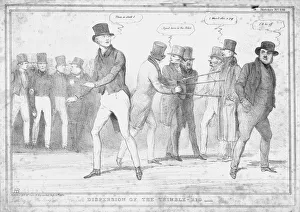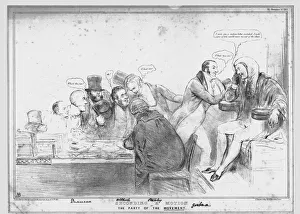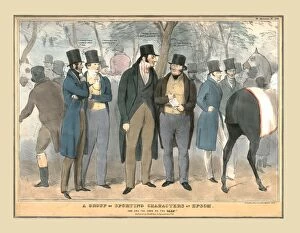John Charles Spencer Collection
John Charles Spencer, the 3rd Earl Spencer, was a prominent British politician and member of high society in the early 19th century
All Professionally Made to Order for Quick Shipping
John Charles Spencer, the 3rd Earl Spencer, was a prominent British politician and member of high society in the early 19th century. Born in 1782, he lived during a time of great political and social change. In his youth, John Charles Spencer was known as Viscount Althorp. A portrait by Sir Joshua Reynolds captures him at the age of four in 1786, showcasing his aristocratic upbringing. As he grew older, he became involved in politics and gained recognition for his progressive views. One such example is depicted in the satirical cartoon "Seconding a Motion or The Party of the Movement" by John Doyle from 1833. This artwork showcases Spencer's support for reformist policies during this tumultuous period. Spencer's political career reached its peak when he served as Chancellor of the Exchequer under Lord Grey's government. However, not all aspects of his life were centered around politics. In "The Nursery" from 1833 by John Doyle, we catch a glimpse into his personal life as a family man. Tragedy struck when Lavinia Countess Spencer passed away in 1831. A poignant painting by Sir Joshua Reynolds immortalizes her alongside her grieving husband and young son titled "Lavinia Countess Spencer and John Charles Spencer. " This piece serves as a reminder that even those with power and influence experience loss and heartbreak. Despite facing personal hardships, Lord Spencer remained dedicated to public service until his death in 1845. His commitment to progress is evident through various artworks like "So Much out of the Fire or The Man Wots Lost His Throne" from 1834 by John Doyle which symbolizes resilience amidst adversity. Lord Spencer's legacy lives on through these historical artifacts that capture different facets of his life - be it political endeavors or intimate family moments. These images provide us with glimpses into an era defined by societal transformations where individuals like John Charles Spencer played a significant role.














